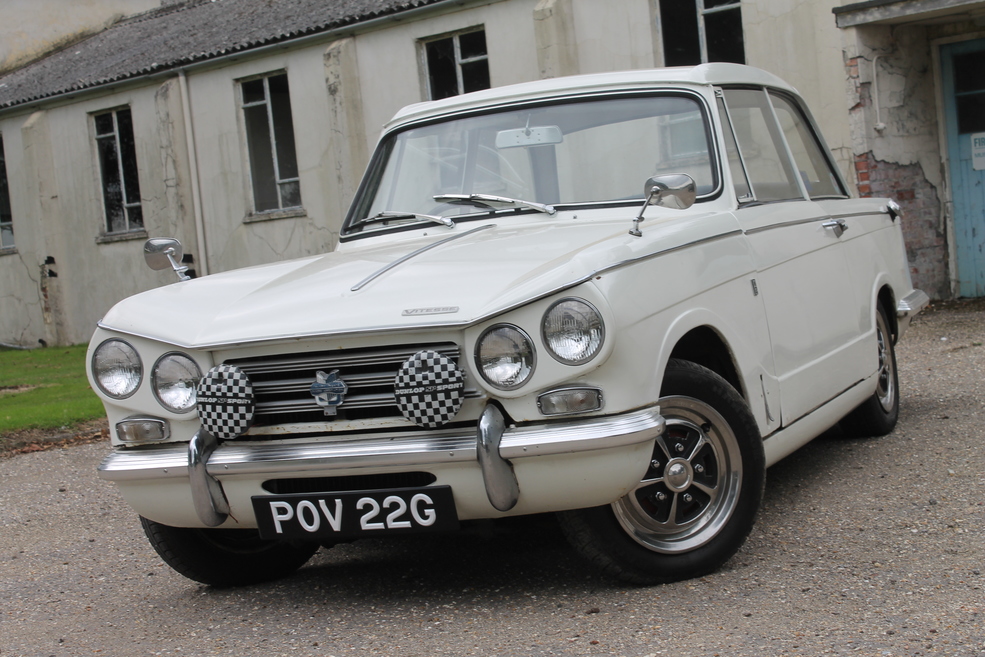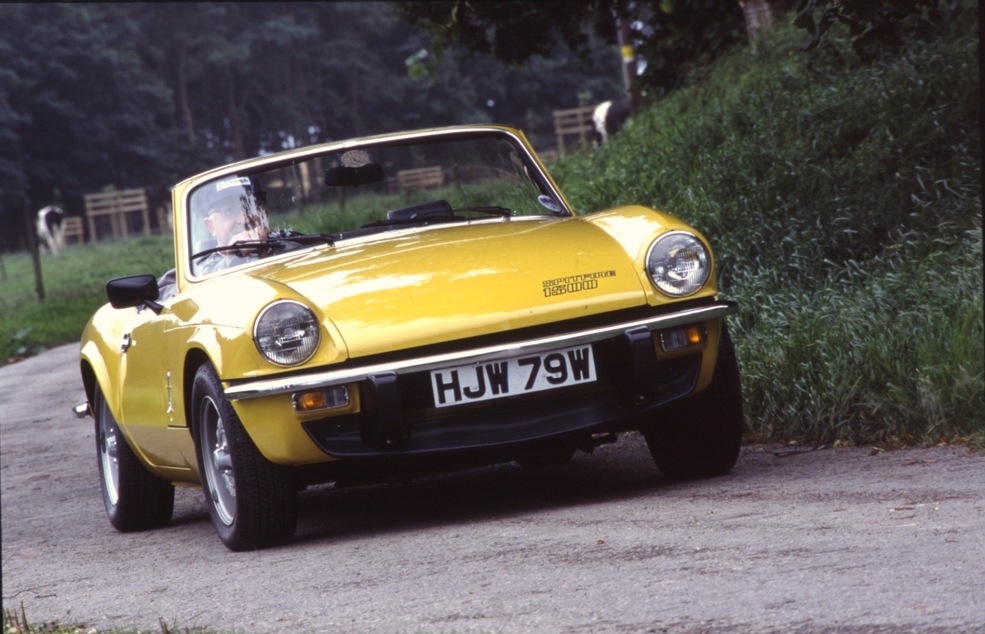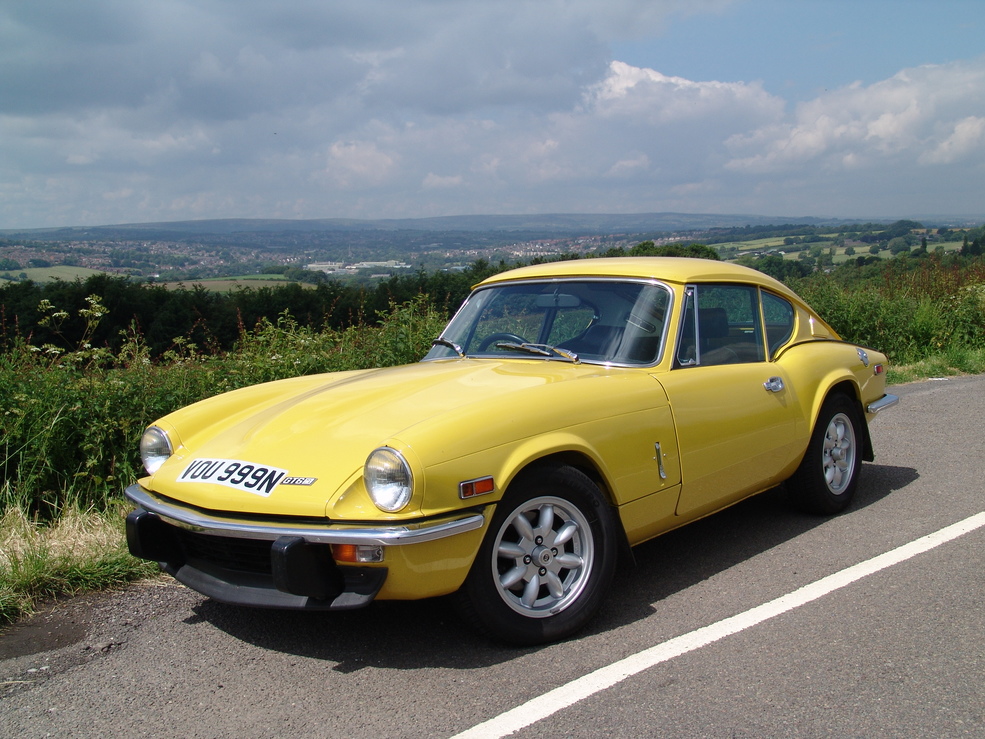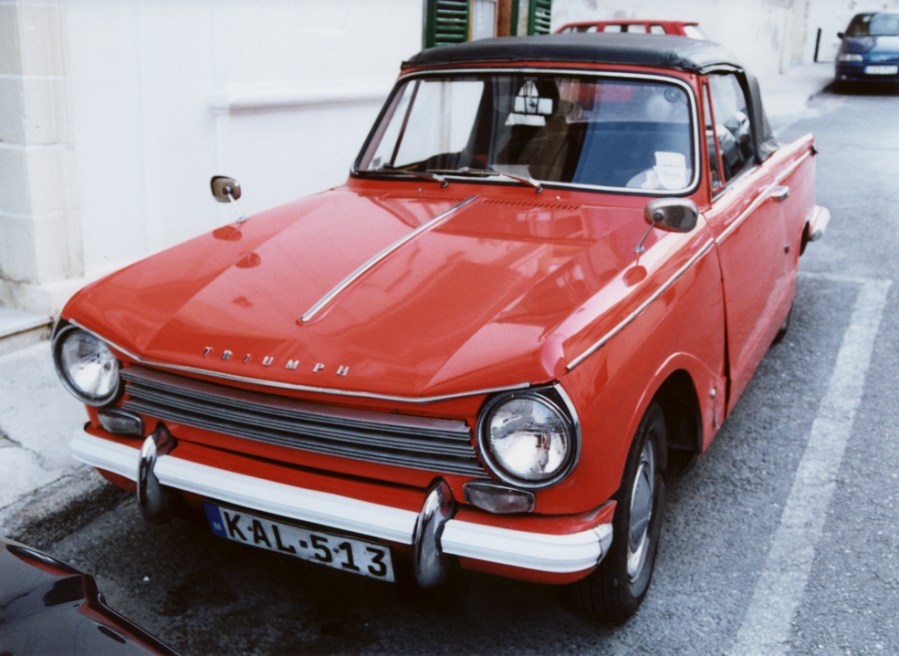Small Triumphs make one of the best starter classic breeds in the business. But you needn’t settle for a saloon, there are plenty of sporting options too. In this Market Trends we explore four separate-chassis Triumphs; the Herald, Vitesse, Spitfire and GT6.
Triumph Herald
The Triumph Herald’s separate chassis underpinnings were out of date even when the car was launched – a retrograde step from the preceding Standard Eight. However, the move had been prompted by BMC’s purchase of Fisher and Ludlow. By using a separate chassis and bolted-on panels, Triumph had safeguarded against potential supply restrictions by ensuring that panels were small and cheap enough to be subcontracted elsewhere if need be.
Launched as a two door 948cc saloon, the engine expanded to 1147 and then 1296 by the car’s demise in 1971. At various stages, a coupe, a convertible and an estate were made available. Replaced by the Toledo, the Herald’s popularity endured as a basis for kit cars.
The last five years have seen a gradual increase in the values of the Herald range – with cars now worth about twice what they would have been worth during 2014. The quality of Heralds sold has also risen over the same timeframe – with average values resting at around £3500 in 2014, now you’re more likely to have to spend £6000-7000 to get something pleasant. Convertibles are worth about 20% more, saloons and estates worth about the same – Coupes command a slight premium.

Triumph Vitesse
As a sporting brand, Triumph’s range was decidedly lacking in sports saloons by 1962. The solution was simple; take the compact Herald saloon, slot in a modified version of the 2000’s six-cylinder engine, and give it a mildly more dynamic look. With a smaller bore, the 1600cc Vitesse still had a respectable level of performance, but the weight balance changes only served to show the flaws in the rear suspension design.
The 1966 Vitesse Two Litre didn’t help – increasing the power output to 95bhp with no changes to the suspension meant that the car was easier to provoke, but modified rear suspension turned the Vitesse MKII of 1968 into a genuinely amusing and capable MGB-chaser. Only officially available as a saloon or convertible, several have converted Herald Coupes and estates to Vitesse specification.
Vitesse values have undergone greater vicissitude than the Herald on which they’re based – but overall the increase in value across the last five years has been negligible. Once a good Vitesse might be worth double the value of a nice Herald, but we’re far closer to model parity now. Saloons are worth less, while the most desirable era is the MK2. Expect a 30% difference between a 1600 Vitesse 6 saloon and a Vitesse 2-litre MKII convertible.

Triumph Spitfire
The beauty of a separate chassis design is that with relatively few modifications, different bodies can be used. Nowadays it’s called platform sharing, but in 1962 it yielded the Triumph Spitfire. Effectively, this was a Herald with a sports body. Launched as the Spitfire 4 (in order to open the possibility of a six-cylinder model), the Spitfire was subject to constant refinement. In 1965 the MKII came out – more power and minor trim revisions. The MK3 brought a prominent front facelift with a higher bumper, a new 1296cc engine derived from the Triumph 1300 saloon, and a folding hood. The MKIV of 1970 – not o be confused with the Spitfire 4 MK1 – was wholly restyled; a Kamm tail in the style of the Stag and a new nose, new doorhandles, and a dashboard derived from that of the larger-engined GT6 in an attempt to increase commonality. This is how the Spitfire would look until the end of production in 1981 – though 1974 saw the 1300 engine replaced with a 1493cc engine.
Good Spitfires have almost doubled in values alongside the Herald – in 2014 a good Spitfire was a £5000 car, where now you might need nearer £10000 to buy the best. £6000-7000 will still buy a good example – considerably less for a MKIV, but earlier cars are worth more.

Triumph GT6
Add a roof to the Spitfire sports car, drop in the two litre six pot from the Vitesse, and you get the GT6. Originally intended as a straight fixed-head derivative of Spitfire, the Spitfire GT4 concept was abandoned when it was found that the roof dented the performance of the 1147cc Spitfire based car. Launched in 1966 and based on the MKII version of the Spitfire, the GT6 initially retained the same rear suspension design as the lighter sportscar, leading to tuck-under and snap oversteer in the wet. From the facelifted MK2, a new rear suspension design was used involving Rotoflex couplings which kept the wheels in contact with the ground in a more predictable manner. A little extra poke was welcomed, too – but for many the best GT6 was the last GT6. The facelifted MK3 was the most refined of the bunch, but the plug was pulled in 1973 as the sportscar range was restructured.
GT6s typically weren’t expensive cars five years ago – £7000-8000 could get you something rather nice, though the market’s nudged them over the five figure mark. An average GT6 now might command £10-12000. Similar numbers of cars are offered for sale, but the quality is noticeably higher.





